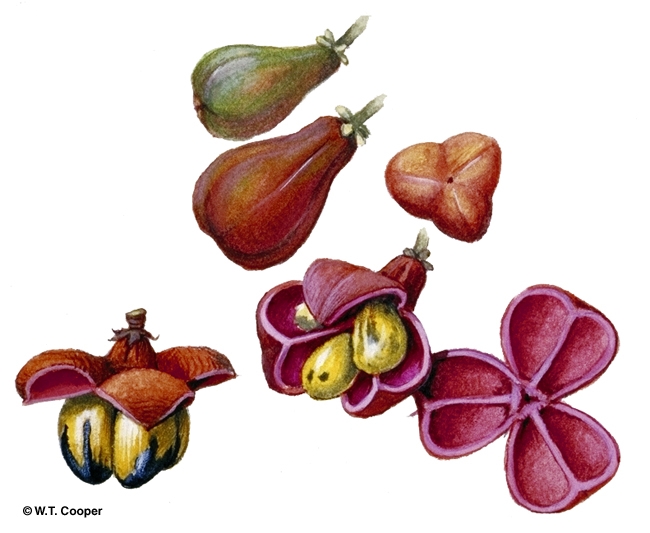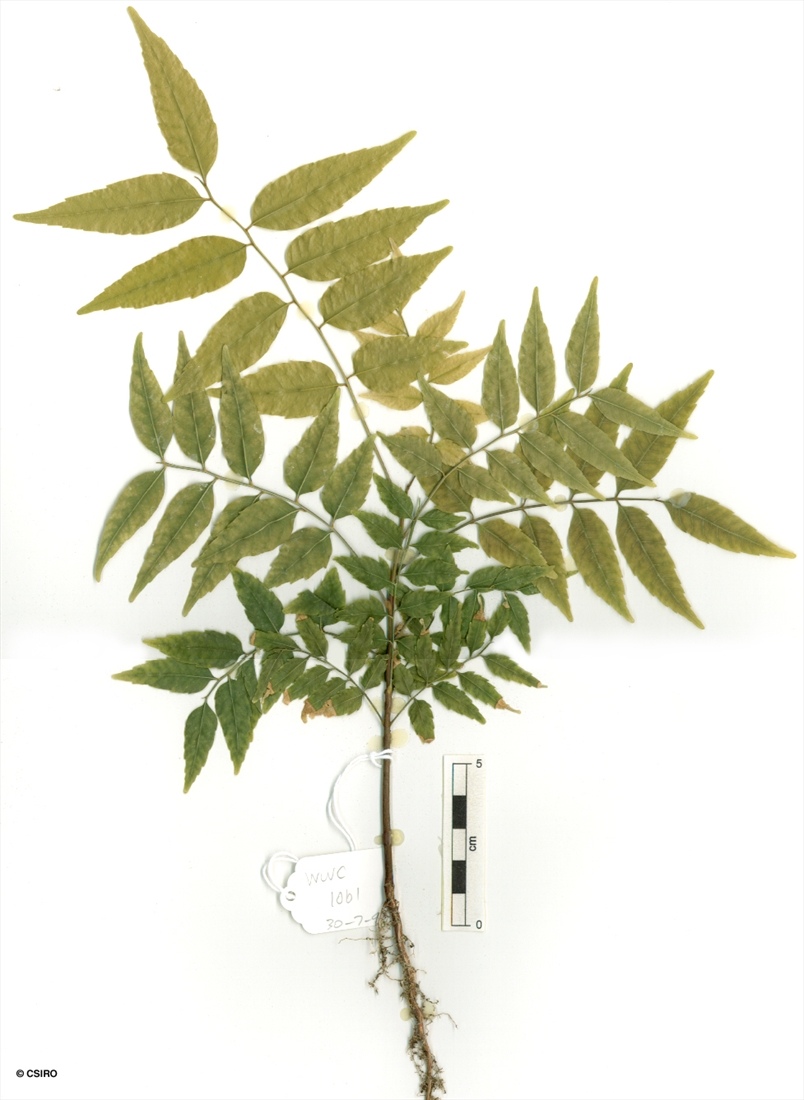Australian Tropical Rainforest Plants - Online edition
Lepiderema largiflorens S.T.Reynolds




Reynolds, S.T. (1981) Austrobaileya 1(3): 489. Type: Cook District: Bartle Frere, May 1952, K.J. White 198 (BRI, holotypus).
Usually grows into a small tree but also flowers and fruits as a shrub.
Leaflets about 18-22 in the compound leaf, each leaflet blade about 6-17 x 2-5 cm, leaflet stalks about 0.3-1 cm long. Lateral veins about 18-22 on each side of the midrib. Young shoots and leaves viscid. Teeth usually present on the margin of the leaflet blades but generally towards the apex. Midrib shortly hairy on the upper surface of the leaflet blades. Leaflet stalks generally channelled on the upper surface but with a ridge down the middle, swollen at its junction with the compound leaf rhachis. Compound leaf rhachis convex on the upper surface.
Panicles about 13-40 cm long. Calyx lobes about 2.5-4 mm long, glabrous. Petals about 2.5-3 mm long, glabrous. Staminal filaments up to 2 mm long, staminal filaments and anthers hairy. Glandular disk completely surrounding the base of the ovary and the staminal filaments. Ovary very slightly longitudinally ribbed. Style very short, similar in diameter to the papillose stigma.
First pair of leaves compound with about 9-10 leaflets. Leaflets narrowly ovate, the margins deeply serrate. Compound leaf rhachis with a narrow wing on each side. Terminal bud hairy. At the tenth leaf stage: compound leaf with about 10-12 leaflets and the rhachis extending about 3-5 mm beyond the point of attachment of the apical pair of leaflets. Leaflets with about 4-9 teeth on each side. Midrib raised on the upper surface. Seed germination time 16 to 21 days.
Endemic to NEQ, known only from collections made on the lower slopes of the Bellenden Ker Range and Mt Bartle Frere. Altitudinal range from near sea level to 700 m. Grows as an understory plant in well developed, undisturbed lowland and upland rain forest.





